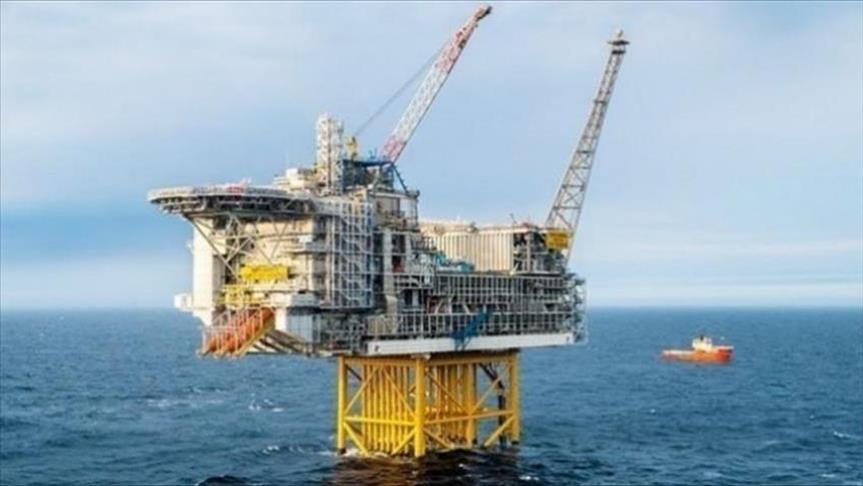- The Writer holds an MSc in Eurasian Political Economy & Energy from King’s College London and also an MA in European Studies from Sabancı University.
With new discoveries, Arctic oil and gas resources have become popular over the past few years. The shrinking ice caps in the Arctic have opened up new commercial opportunities in the region and allowed previously inaccessible oil and gas deposits to become available. Although the exact quantity of these resources has not been determined, once these resources become commercially viable for investors, the successful development of Arctic oil and gas fields would help alleviate pressures on the global energy market by strengthening security of supply.
Many studies have been undertaken in the Arctic to assess hydrocarbon reserve potential but none compares to the U.S Geological Survey (USGS) study carried out in 2008. The study’s data is not based on exploratory drilling but rather based on the probability of 33 oil and gas accumulations in the Arctic Circle - both offshore and onshore. According to the study’s estimate, there is a high probability that the Arctic has 618 billion barrels of oil () and 2,990 trillion cubic feet (tcf) of natural gas. However, the low probability scenario estimates the amount of undiscovered oil reserves is around 157 , while natural gas is expected to be approximately 770 .
It is also worth noting that the USGS excluded unconventional hydrocarbon resources as well as any gas and oil fields that were below 50 million barrels of oil and 300 billion cubic feet of natural gas. Even in the low case scenario, estimated oil and gas reserves hold significant volumes. However, the Arctic’s abundance in natural resources does not always guarantee viability for production since extraction, processing, and transportation costs are also just as vital as large reserves.
The presence of vast oil and gas reserves might be the most important initial concern for investors, but in the case of the Arctic, several other factors need to be taken into account prior to any final investment decision being made. Challenges stemming from the technicalities of extraction, processing as well as shipping will dictate the final investment decision in the Arctic.
Large floating ice blocks that can effortlessly demolish oil rigs, drilling platforms and the permanent ice cover all require strengthened and enhanced engineering and construction. And this would eventually drive up overall costs for investors. Therefore, without thorough risk assessment, any project would be doomed to failure. Recent studies suggest that changing climate conditions in the Arctic could cause violent storms and extreme weather conditions could be destructive to infrastructure.
In addition, concerns have been raised over the development of oil and gas fields in the region as the area’s unique flora and fauna could also be endangered during the drilling and extraction operations. In comparison to other offshore explorations, the ecosystem of the Arctic, which has relatively shallow water level that is vastly covered in ice, is more sensitive and more prone to destruction. Unless its fragile ecosystem is treated with due concern for environmental protection, its regional flora and fauna could easily be endangered. For this reason alone, oil and gas exploration and production in the Arctic requires costly protocols and equipment designed specifically for the region’s topography. Consequently, difficulties imposed by extreme weather conditions along with the fragile ecosystem need a high protection level. This could accelerate the risk factor for investors resulting in a more cautious approach to projects in the Arctic or at least could scale down their potential operations.
Another unknown factor in the Arctic’s oil and gas reserves is the resource’s chemical composition. Since the quality of crude oil is graded based on the level of its viscosity and its sulfur content, the quality of the Arctic’s crude reserves remains to be seen in the near future as extraction progresses. Crude oil high in sulfur with less fluidity, known as heavy sour crude, would not attract many oil companies to the Arctic due to the higher cost of refining. Whereas, in the case of high fluidity with low sulfur content, or light sweet crude oil, more investment would be likely as refining costs would drop with the promise of greater marginal profits. However, the composition of the Arctic’s oil reserves will only be better understood as studies further develop and more extraction projects are undertaken.
Canada, Denmark, the U.S., Russia Denmark are the five littoral nations that are attempting to navigate new opportunities in the region. Nonetheless, should maritime boundary disputes and territorial claims among these states arise, conflicts would likely ensue in the quest for the vast energy resources.
Over 40 years of ongoing border disputes between Russia and Norway ended in 2010 with an Arctic border treaty. Both Russia and Norway came to the conclusion that there was more to gain through cooperation than by confrontation. Although various claims might occur over territorial ownership among countries with Arctic coastlines in the future, the amicable resolution of disputes could follow in the footsteps of Russia and Norway, which ended with a Russia-Norway Treaty. The USGC report stressed the goods news that the most contested region in the Arctic is the place where the least amount of hydrocarbon reserves has been found. Therefore, cooperation between Norway and Russia is a good sign for the future prospects of conflict resolution for other littoral states.
The Arctic region’s recently discovered vast oil and gas reserves offer for the global economy. Even though the exact reserve volumes have not yet been identified, the currently available statistics suggest that the Arctic’s significant oil and gas reserves may well attract many National Oil Companies and International Oil Companies. Nevertheless, it is not yet clear at what profit margin these companies are able to accelerate their investments or embark on large-scale Arctic projects.
- Opinions expressed in this piece are the author’s own and do not necessarily reflect Anadolu Agency's editorial policy.


